

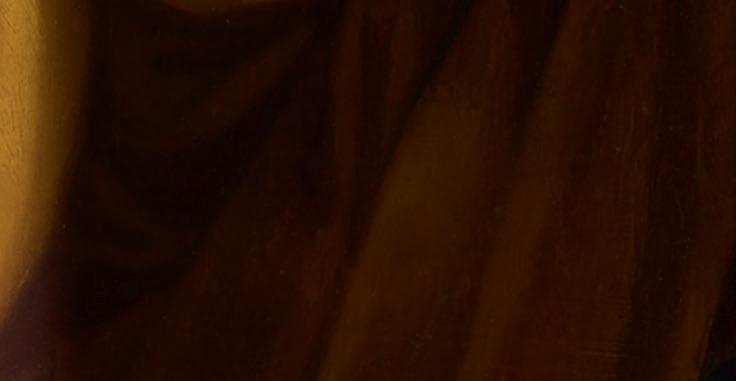




Websites
www.harveymillerpublishers.com – www.brepols.net
E-Newsletter
Subscribe to our free E-Newsletter: info@brepols.net
Please specify your field(s) of interest.
Social Media
NEW TITLES
Spring 2024
Harvey Miller Publishers
An imprint of Brepols


















Websites
www.harveymillerpublishers.com – www.brepols.net
E-Newsletter
Subscribe to our free E-Newsletter: info@brepols.net
Please specify your field(s) of interest.
Harvey Miller Publishers
An imprint of Brepols












Through a careful selection of essays, curated his primary concerns with “Titian the painter and on the affective structures of his art, his technique and mimetic power, on its poetry,” this book reconstitutes the many facets of David Rosand’s vision of the artist.

he present volume offers an extensive compendium of the late Professor David Rosand’s writings on Titian through a collection of essays published between 1971 and 2014. Throughout his illustrious career at Columbia University, Rosand indefatigably investigated the Venetian artist’s pictorial intelligence, and much as the continuous conversation of an enduring friendship creates ever new levels of intimacy and understanding, this lifelong engagement resulted in some of the most convincing interpretations of Titian’s artworks penned to date. While his scholarship has been extremely influential on Titian studies, Rosand’s most significant texts on the artist are chapters in books with a broader subject or papers disseminated in journals and collective volumes. Through a careful selection of essays, curated around Rosand’s primary concerns with “Titian the painter and on the affective structures of his art, his technique and mimetic power, on its poetry,” this book reconstitutes the many facets of his vision of the artist. The reader is invited to enjoy this volume both as a means to gain deeper insight into the art of Renaissance Venice, and also the shifting priorities in the field of art history in the second half of the twentieth century, which Rosand himself did

much to mold. His ground-breaking interrogation of the relationship between making and meaning in Titian’s art remains remarkably fresh and will doubtless continue to offer prompts to future generations of scholars. At the same time, his lively and inimitable style means his essays will engage any individual curious about art, its creation, and its connection to literature and society.
Diane H. Bodart is the David Rosand Associate Professor of Italian Renaissance Art History at Columbia University. Her research focuses on arts theory and practice in Italy and in the territories of imperial Spain in the early modern period.
Cleo Nisse is Assistant Professor of Early Modern European Art at the University of Groningen. Her research concentrates on the materials and techniques of artistic practice, and on how artworks change over time.
David Rosand (1938-2014) was the Meyer Schapiro Professor of Art History at Columbia University and served as the chairman of the Miriam and Ira D.Wallach Art Gallery. Elected to the American Academy of Arts and Sciences, he is also a foreign member of the Ateneo Veneto in Venice. An art historian, conservationist, and critic he was a generous and committed teacher.
436 p., 33 b/w ills, 259 col. ills, 220 x 280 mm, 2024, ISBN 978-1-915487-36-0
Hardback: approx. € 150 / $ 188.00
Series: Studies in Medieval and Early Renaissance Art History FORTHCOMING













David Rosand’s Paolo Veronese is a masterly account of the Venetian painter’s artistic achievement, demonstrating a complete command of the literature and scholarly issues, insightful interpretations of individual paintings and drawings, and a marvelously elegant prose style. Rosand’s reading of each painting judiciously considers how Veronese brought his pictorial intelligence to bear on the formal qualities of his work to create his own personal rhetoric of visual expression, one that embodies the “dignity and nobility of painting” and resonates with viewers and readers today. Rosand’s arguments are not solely visual, however, but are

buttressed by extensive quotations from scripture and textual sources. The author synthesizes decades of research and careful reflection, refining his own approaches, which have themselves stood the test of time. Careful readings of specific paintings, including the celebrated Wedding Feast at Cana, the frescoes at the Villa Barbaro, and the church of San Sebastiano, where Rosand played an integral part in the recent restoration by Save Venice Inc., are all accompanied by lavish illustrations, providing the reader the opportunity to put into practice the author’s conviction that our own responses to paintings will guide their interpretation.
















Through a careful visual analysis of its architecture, paintings and sculptures, this book offers the first comprehensive analysis of the Villa Barbaro at Maser, one of the most famous and beautiful creations of the Italian Renaissance.

hrough a careful description of its architecture, paintings and sculptures, this book offers the first comprehensive analysis of the Villa Barbaro at Maser, one of the most famous masterpieces of the Italian Renaissance. Commissioned and designed by Daniele Barbaro, a leading humanist of the Venetian Renaissance, and his brother Marc’Antonio, an important politician of the Republic of Venice and a talented amateur artist, the villa’s architecture and painted decoration were created by two canonical figures of Renaissance art: the architect Andrea Palladio and the painter Paolo Veronese. By offering a new and holistic reading of the iconographic program of Villa Barbaro, the study highlights in
particular the importance of women, childbirth and motherhood. With a strong multidisciplinary approach, the book is also a contribution to the history of astronomy, philosophy and domesticity in sixteenth-century Venice.
Denis Ribouillault is professor of early modern art history at the University of Montreal. His research focuses on Renaissance villa culture, cultural landscape and garden studies and the intersection between art, science, and literature in the early modern period. He is the recipient of numerous grants including a French Academy in Rome Fellowship, Florence J. Gould Fellowship at Villa I Tatti, and a Dumbarton Oaks Fellowship.
Hardback:
Series: Renovatio Artium,












 Livia Lupi
Livia Lupi

Focusing on three representative fresco cycles, this book reconsiders the painter-architect figure as an earlier phenomenon than currently acknowledged, offering a contribution to bridge the gap between art and architectural history.

ivia Lupi is a historian of art and architecture in early modern Europe, with a focus on the intersection of artistic and architectural practice. Her work has been funded by the Arts and Humanities Research Council, the Leverhulme Trust and the Warburg Institute. In addition to her research, she regularly works as a curator, editor and translator.
Livia Lupi is a Leverhulme Trust Early Career Fellow at the University of Warwick. Her research focuses on late medieval and early modern art and architecture, particularly the intersection between artistic and architectural practice, the relationship between rhetorical theory and the visual arts, and exchanges between Western Europe and the Byzantine empire. Her work on these topics has appeared in Architectural History and three edited volumes.
approx. 220 p., 3 b/w ills, 138 col. ills, 220 x 280 mm, 2024, ISBN 978-1-915487-03-2
Hardback: approx. € 125 / $ 156.00
Series: Renovatio Artium, vol. 12 FORTHCOMING




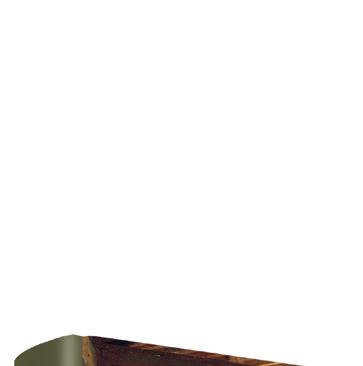









n dozens of monumental examples across central and northern Italy, late-medieval artists created complex diagrammatic paintings whose content was conveyed not through proto-perspectival spaces but rather through complex circles, trees, hierarchical stemmata, and winding pathways.
Trecento Pictoriality is the first comprehensive study of the practice of monumental diagrammatic painting in late-medieval Italy, moving the study of diagrams from the manuscript page to the frescoed wall and tempera panel. Often placed alongside narrative, devotional, and allegorical paintings, the diagrammatic mode was one of a number of pictorial modes available to artists, patrons, and planners, with a unique ability to present complex content to viewers. While monumental diagrams may have sparked some of the experiences usually
associated with diagrams in manuscripts, acting as machines for thought, scaffolds for memory, or tools for the visualization of complex concepts, their reception was also shaped by their presence in public spaces, their scale and aura as richly decorated works of monumental visual art, and their insertion into larger pictorial programs. Closely examining the visual and communicative strategies of these paintings expands the horizon of trecento art history beyond narrative and devotional painting, and shifts our understanding of all of the arts of the trecento, calling attention to issues of scale, visual rhetoric, pictorial ingenuity, and reception.
Karl Whittington is Associate Professor of History of Art at The Ohio State University.
Hardback: € 150 / $ 188.00
Series: Renovatio Artium, vol. 13













Addressing the manifold grounds of Pisanello’s inventions, and tracking the habits imbedded in his imitative practice, Campbell offers a new approach art of one of most famous painters of painters of fifteenth-century Italy, a painter whose work remains endlessly fascinating, but has proven intractable to the interpretative procedures of modern art history.

he work of the fifteenth-century Italian painter Pisanello has long proven resistent the interpretative procedures of art history, in ways that point to the limits of those procedures as they evolved in the period after the Second World War. Taking Pisanello’s art as an example of a larger theoretical issue, the book proposes a model of interpretation that addresses the realm of imitative practice. Using Cennino Cennini’s Il Libro del’ Arte as a primer,the author argues for an approach that confronts the evidence of the artist’s self-tempering work, and then tests that model through an examination of Pisanello’s drawings and medals. She exposes the drawings as primary evidence of the ontological groundwork within which the painter finds his own habits of invention, and also demonstrates the value of
looking for the groundwork in a selection of Pisanello’s official works, including the surviving wall paintings in Veronese churches. In the end, the author contends that the self-reflexive recognition of creative agency is a prerequisite for the apprehension of Pisanello’s art, especially the agonistic scenario staged in his panel of The Virgin and Child with Saints George and Anthony and its enigmatic signature.
C. Jean Campbell is Professor of Art History at Emory University in Atlanta. She has published on court culture and the art of the Italian communes, on vernacular poetics and the visual arts, on life-writing and the persona of Simone Martini, and most recently, on imitative practice and its secrets.
208 p., 68 col. ills, 220 x 280 mm, 2024, ISBN 978-1-915487-12-4
Hardback: € 125 / $ 156.00
Series: Renovatio Artium, vol. 15
FORTHCOMING










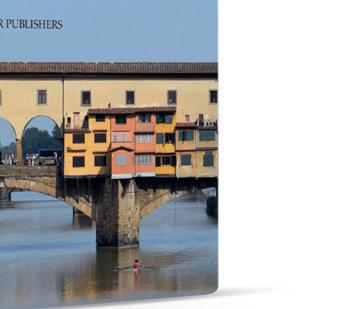



Drawing upon new documentary research, this is the first in-depth modern scholarly study of the Ponte Vecchio in Florence.
amous today for the shops lining its sloped street, the Ponte Vecchio is the last medieval bridge spanning the Arno River at Florence and one of the few remaining examples of the once more prevalent urbanized bridge type. Drawing from early Florentine chronicles and previously unpublished archival documents, this book traces the history of the Ponte Vecchio, focusing on the current bridge’s construction after the flood of 1333. Much of the Ponte Vecchio’s original fourteenth-century appearance is now obscured beneath later accretions, often mistakenly interpreted as original to its medieval character. To the contrary, as argued in this book and illustrated by new reconstruction drawings, the mid-trecento Ponte Vecchio’s vaulted substructure was technically advanced, its urban superstructure was designed in accordance with contemporary Florentine urban planning strategies, and its “beautiful and honorable” appearance was maintained
by government regulations. The documents also reveal new information about the commission and rental of its famous shops. Relying on these sources, this study offers a more complete history of the Ponte Vecchio, adding significantly to what is currently known about the bridge’s patronage and construction, as well as the aims of civic architecture and urban planning in late medieval Florence.
Theresa Flanigan is Assistant Professor of Art History at Texas Tech University and a specialist in Italian Medieval and Renaissance art and architectural history. Dr. Flanigan received her Ph.D. in Art History from New York University’s Institute of Fine Arts, a MA in Art History from Syracuse University’s Florence Program, and a B.Arch. in architectural design from Syracuse University. She was also a foreign fellow at the Scuola Normale Superiore in Pisa, Italy.
approx. 325 p., 25 b/w ills, 100 col. ills, 240 x 240 mm, 2024, ISBN 978-1-912554-68-3
Hardback: approx. € 150 / $ 188.00
Series: Architecture and the Arts in Early Modern Italy, vol. 5 FORTHCOMING













This collection of essays approaches the history of early modern news from a unique standpoint: by analyzing the stories that made the news in Europe, in particular years across the period from 1588 to 1700, in all of the major genres, including manuscript and print, single and serial publication, open and clandestine.

n the early modern springtime of regular news production and consumption, what was the news? Where did it come from? Where did it go?
Years of News surveys the world of early modern news, in script and print, in a variety of languages, from a unique vantage point: namely, the news productivity across Europe in a series of carefully chosen years. Contributors, applying a wide variety of innovative approaches and methodologies to original material from archives and libraries far and wide, have explored the stories and the tellers, the networks and the vectors, the effects and reactions. Diving deeply into the data without losing sight of the wider perspective, they seek to illustrate the relation between event and narration, and between
narration and impact, while conveying the flavor of the times as experienced by the actors through the medium of news.
Brendan Dooley is Professor of Renaissance Studies at University College Cork, Ireland, where he came after employments at Harvard, Notre Dame, Jacobs University Bremen, and the Medici Archive Project, and his many publications have chiefly regarded the history of knowledge and communication.
Paola Molino is Associate Professor in early modern history at the University of Padua. She received her PhD in History and Civilization from the European University Institute in 2011.
approx. 260 p., 48 b/w ills, 5 col. ills, 220 x 280 mm, ISBN 978-1-912554-88-1
Hardback: approx. € 115 / $ 144.00
Series: The Medici Archive Project, vol. 7 FORTHCOMING









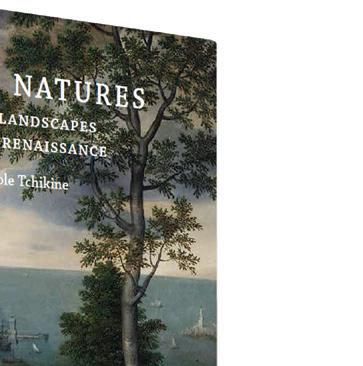



This book offers new scholarly perspectives on diverse roles that gardens played in Italian Renaissance culture as sites of environmental knowledge, social prestige, identity fashioning, and artistic innovation, building on their contemporary understanding as products of a collaborative relationship between humans and nature.

n the middle of the sixteenth century, humanist Jacopo Bonfadio referred to gardens as “a third nature,” as distinct from the landscapes of agriculture and habitation or the primordial if notional wilderness. This idea, newly resonant today in the age of climate change, elevated the art of gardening to a model of collaboration between human and natural worlds. Having no precedent in the literature of antiquity, Bonfadio’s metaphor was the most original Renaissance attempt to define the place of gardens within the order of nature as a unique symbiotic product of this ongoing dialogue.
This book, focused on fifteenth- through seventeenth-century Italy, revives Bonfadio’s emphasis on the collaborative ethics of environmental relationships as key to understanding the early modern modes of cultural appropriation of the
natural world. At the center of this discussion are various ways in which gardens captured the variety of manifestations of nature, couched in the language and categories of contemporary experience. Written by an interdisciplinary team of scholars including some of the leading authorities in the field, this book shows how garden design and meaning were instrumentalized in such diverse contexts as elite collecting, natural philosophy, artistic practice, poetic discourse, medical theory, and religious imagination, laying out new theoretical frameworks for explaining the centrality of these green spaces in fashioning social, gender, and regional identities.
Anatole Tchikine is an architectural historian and Curator of Rare Books at Dumbarton Oaks, an institute of Harvard University in Washington, DC.
approx. 220 p., 40 b/w ills, 79 col. ills, 220 x 280 mm, 2024, ISBN 978-1-915487-23-0
Hardback: € 125 / $ 156.00
New Series: Early Modern Gardens and Landscapes, vol. 1 FORTHCOMING

This series invites original scholarship that captures the multiplicity of cultural responses to and appropriations of nature across the globe from the mid-fourteenth through the early nineteenth centuries. We are particularly interested in exploring the intersections between garden traditions, landscape imagination, and environmental knowledge of the early modern period, framed by different humanities perspectives with a strong historical emphasis. Subjects can range from spaces that orchestrated European encounters with the natural world on a local or global scale — such as pleasure and botanical gardens, cabinets of curiosity, and artistic collections — to landscapes of labor, spirituality, fantasy, and memory: from the Caribbean plantations and sacred groves of Africa and Japan to the Counter Reformation sacri monti and the Chinese literati painting as a form of meditation. Contributions that highlight transfers or conversations between mainstream and vernacular garden design traditions or put scientific botanical and medical discourse in dialogue with Indigenous knowledge and practices are particularly welcome. No other comparable series intended to capture his range of scholarship exists in English.










Eleonora Pistis
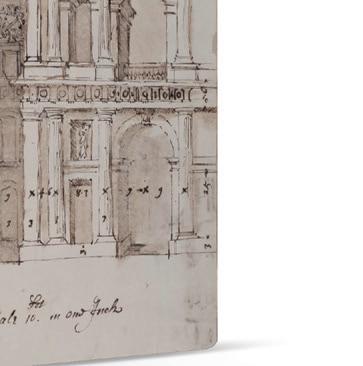


This book discloses the meaning of Nicholas Hawksmoor’s extraordinary designs and urban plans for Oxford University (1708-1736), providing a new multi-layered picture of the creation, collection, and dissemination of architectural knowledge across different media in one of the most important centers of learning in Western culture.
icholas Hawksmoor’s dream of a new Oxford, though only partly realized between 1708 and 1736, remains one of the most striking examples of the architecture of knowledge from the early modern period. This was a time of enlightened experimentation on paper and in stone. Intellectuals and their chosen architect envisaged a network of streets, paths, gates and squares connecting newly designed colleges, libraries and the university press. Complementing the feverish activity of the worksites the study, collecting and dissemination of architecture was profoundly reshaped. Building, thinking and learning are entwined in this episode

as never before in the history of a great university as it pivoted from medieval to modern. The graphic legacy of this ferment is illustrated with an abundance of drawings, prints and treatises, many published here for the first time.
Eleonora Pistis is Assistant Professor in the Art History & Archaeology Department at Columbia University. She is a specialist of 17th- and 18th-century architecture and antiquarian culture.
320 p., 6 b/w ills, 214 col. ills, 220 x 280 mm, ISBN 978-1-905375-97-4
Hardback: € 150 / $ 188.00
Published outside a Series FORTHCOMING













Ingenious Italians: Immigrant Artists in Eighteenthcentury Britain explores the lives of the nearly two hundred Italian artists who made the arduous journey to Britain, adapting to a foreign culture while using their renowned skills and entrepreneurial abilities, inspiring and instructing indigenous artists as they enriched the culture of their new country.
his book fills a significant gap in the literature on eighteenth-century art in Britain. Although immigrant Italian artists played a crucial role in the development of Britain’s expanding art world over the course of that century, they have been largely overlooked in books on both British and Italian art. When mentioned in works on eighteenth-century British art, Italian artists are regarded as bit players who were tangential to the art world. Ingenious Italians seeks to correct this view, demonstrating the critical role played by immigrants who brought their skills and talents to a new country. In Britain, they established networks of Italian and British colleagues, cultivated new patrons and created innovative works for a growing market. In doing so, they influenced the development of

art in British society. This little-explored facet of art history in Britain presents readers with a new perspective from which to consider the art of the era, highlighting the important work contributed by Italian artists in Britain. The book also contains an appendix of biographical information on the Italian artists working in Britain throughout the eighteenth century.
Katherine McHale received her PhD from the University of St Andrews in 2018, after a thirty-year career as a lawyer. Her thesis, the basis for this book, continued her masters’ research at Hunter College, New York City, exploring the intersection between eighteenthcentury Italian and British art.
344
Hardback:










 Matthew Collins, Luca Marcozzi (eds)
Matthew Collins, Luca Marcozzi (eds)

Volume two of this series features new perspectives from fields including philology, literary criticism, philosophy, art history, and design.

his volume continues the Reading Dante with Images series, which brings together two great traditions in the critical engagement with Dante’s Commedia: The Lectura Dantis, a cantoby-canto interpretation of the poem that dates back to the fourteenth century, and the artistic interpretation of Dante’s work, which began among the earliest manuscript copies of the poem that generated rich and dynamically evolving iconographies. Each of these traditions played key roles in the early and continued diffusion of the text and its interpretation, and they have developed over the centuries in surprising and enlightening ways, mirroring expanding and renewing interest in Dante’s masterpiece on the part of his readers. This series is itself one such renewal, bringing an interdisciplinary group of scholars and artists into engagements with the poem and its illustrations’ visual commentaries. Volume two of this series

features new perspectives from fields including philology, literary criticism, philosophy, art history, and design.
approx. 320 p., 125 col. ills, 220 x 280 mm, ISBN 978-1-915487-35-3
Hardback: approx. € 150 / $ 188.00
Series: Reading Dante with Images, vol. 2 FORTHCOMING
Matthew Collins holds a PhD from Harvard University’s Department of Romance Languages and Literatures. He has published, among other things, on the reception history of Dante’s Commedia in illuminated manuscripts, drawings, and early printed illustrations, as well as later literary receptions of the work, including the influence of Dante on Giacomo Leopardi and Bob Dylan.
Luca Marcozzi is Full professor of Italian Literature, Università di Roma Tre. He focuses on Dante, Petrarch and Renaissance literature. He was a Fulbright Distinguished Lecturer at the University of Notre Dame (2013).










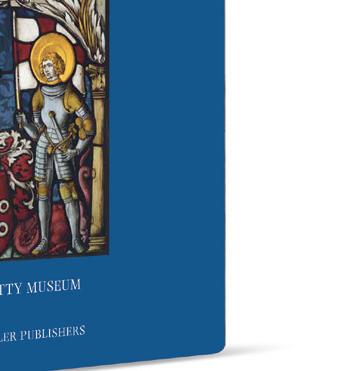


This volume profiles the stained glass of two prestigious institutions in Los Angeles, the Los Angeles County Museum and the J. Paul Getty Museum, with works of superb quality ranging from the 13th to 17th centuries that represent the vitreous art of Austria, England, France, the Netherlands, Belgium, Germany, and Switzerland.
his volume in the international Corpus Vitrearum series profiles two prestigious institutions. The works date from roughly 1210 through 1667 and represent art of Austria, England, France, the Netherlands, Belgium, Germany, and Switzerland. Demonstrating techniques found in thirteenth-century largescale windows of deeply saturated color to the small-scale panels of uncolored glass whose designs are linked to the great printmakers of the sixteenth century, the collections are remarkably diverse and comprehensive. A rare fragment of one of the most prestigious installations in Europe, that of Klosterneuburg, Austria, dates from 1335. A brilliantly executed heraldic panel from Nuremberg dates to the era of Albrecht Dürer, and shows the sorting marks used to identify and assemble panels after a firing of multiple windows in the kiln. Large cloister windows of the later Middle Ages are represented by four panels from the Swiss convent of Rathausen,

suppressed during the Reformation. The Los Angeles County Museum is particularly rich in small panels of the average citizen, farmers and cattle dealers from Switzerland and Germany, meant for insertion into the lattice windows of an inn, town hall, parlor, or church. With great good humor, one panel shows a goldsmith and his wife standing proudly while above them monkeys are busy in the workshop. These works speak to us over time, revealing as well, the attraction of these translucent images for collectors, including William Randolph Hearst.
Virginia Chieffo Raguin, Ph.D. Yale University, Distinguished Professor of Humanities Emerita, College of the Holy Cross, authored Stained Glass Radiant Art, profiling the J. Paul Getty Museum, as well as Stained Glass from its Origins to the Present, 2003. In the Corpus Vitrearum series, she co-authored Stained Glass before 1700 in the Midwest United States, 2002.
2 vols, 508 p., 89 b/w ills, 420 col. ills, 230 x 315 mm, 2024, ISBN 978-1-912554-71-3
Hardback: € 250 / $ 313.00
Series: Corpus Vitrearum USA, vol. 10 FORTHCOMING







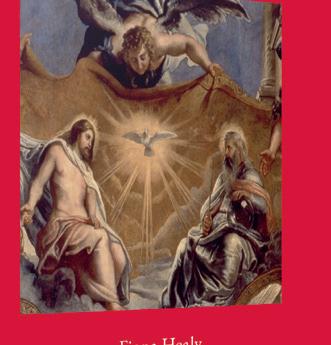




Fiona Healy
The book deals with the Virgin’s pre-Annunciation life, as those episodes involving her son – the Annunciation itself, Mary’s suffering during Christ’s passion, her assumption, and coronation.

hereas other volumes in the Corpus Rubenianum series address a single topic, Part IV (The Holy Trinity, The Life of the Virgin, Madonnas and The Holy Family) deals with very distinct topics, two of which, The Trinity and The Life of the Virgin, form the subject of the present book.
More precisely, the book deals with the Virgin’s pre-Annunciation life, as those episodes involving her son – the Annunciation itself, Mary’s suffering during Christ’s passion, her assumption, and coronation – have been treated in the parts of the Corpus that deal with Christ’s life. The focus here is on Mary’s birth, upbringing and marriage, events described in varying detail in Early Christian and medieval texts. Not all the works discussed are by Rubens himself, but all show his artistic ingenuity, evident in his novel treatment of well-known subjects, often with a long visual tradition, as well as in his ability to devise new ones. Also catalogued here are such important altarpieces as The Immaculate Conception once owned by Philip IV of Spain and the magnificent Virgin as the Woman of the Apocalypse.
The very different theme of The Holy Trinity comprises just four entries, which, however, constitute
half the volume. During the occupation of Mantua by Napoleonic troops, the three enormous paintings which Duke Vincenzo I Gonzaga had commissioned from Rubens were removed from the Church of Santissima Trinità. The Transfiguration and The Baptism of Christ, both prime examples of the Trinity’s manifestation on earth, have survived intact. The Gonzaga Family in Adoration of The Trinity was, by contrast, cut into fragments. The large central section with the portraits of Vincenzo, his wife and parents looking up at the angels displaying a tapestry with the Trinity was, however, rescued for Mantua. Other fragments, primarily with portraits of the children and halberdiers, were dispersed, though some have since resurfaced. The analysis of this commission offers the first comprehensive treatment of the material in English and highlights this project as the earliest indication of Rubens’s creative potential in designing largescale decorative programmes.
Fiona Healy is an independent scholar and a member of the Editorial Board of the Corpus Rubenianum Ludwig Burchard.
2 vols, approx. 750 p., 258 b/w ills, 140 col. ills, 180 x 265 mm, ISBN 978-1-915487-42-1
Hardback: approx. € 275 / $ 344.00
Series: Corpus Rubenianum Ludwig Burchard, vol. 4.1
FORTHCOMING








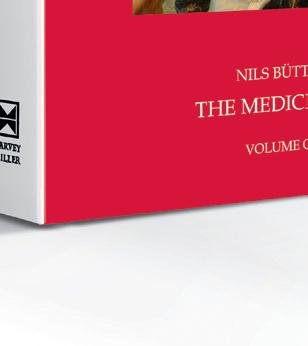





The decoration of the Luxembourg Palace galleries was the largest commission Rubens ever received. On Saturday 26 February 1622, the artist signed two contracts at the Louvre with the agreement ‘to make and paint with his own hand each and every one of the figures’ of the paintings which would decorate the two parallel galleries of the palace that the Queen Mother, Maria de’ Medici (1573–1642), had begun to have built on the left bank of the Seine. According to the first contract, the western gallery was now ready and Rubens ‘will be bound and obliged to design and to paint with his own hand twenty-four paintings depicting the history of the very illustrious life and heroic exploits’ of the Queen Mother, conforming to an incomplete memoir, of which he had received a copy. Rubens arrived in Paris to put the final touches to the finished canvases celebrating the life of Maria de’ Medici at the beginning of February 1625. But at this time the eastern gallery, planned to display the ‘battles… and triumphs’ of King Henri IV (1553–1610), Maria’s late
802
Hardback: € 275 / $ 344.00
Series: Corpus Rubenianum Ludwig Burchard, vol. 14.1
husband, was still under construction. The Henri IV Gallery was to be an unfinished masterpiece: after a temporary suspension of the work in 1630, the project was definitively abandoned in 1631. Alexis Merle du Bourg’s in-depth study of the Henri IV Series was published as Part XIV.2 of the Corpus Rubenianum Ludwig Burchard in 2017. The present volume charts the earlier part of the Medici commission, which happily survives, splendidly completed. It presents Maria in her relationship with Henri, her public role after her husband’s death and, not least, her difficulties and then reconciliation with Louis XIII, her son. Here Rubens invoked the gods of ancient myth and a whole company of personified abstractions to help mask problematic episodes, dignify banal events and create a glorious commemoration of the life and aims of the Queen Mother.
Nils Büttner is professor of art history at the State Academy of Art and Design in Stuttgart.





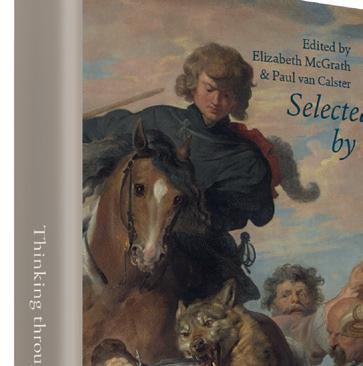

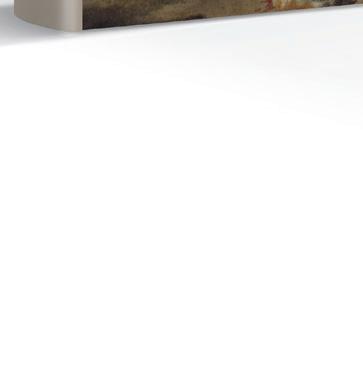


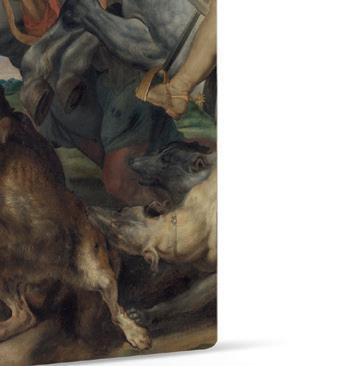

 Elizabeth McGrath, Paul van Calster (eds)
Elizabeth McGrath, Paul van Calster (eds)
Exemplary in their originality, scope and intellectual rigour, Arnout Balis’s many outstanding publications, of which a selection spanning forty years of scholarship is presented here, constitute but a small part of what he contributed to the understanding of the art of Rubens and his contemporaries.
Over the course of his life, Arnout Balis (d. 2021) did a lot of thinking about and around Rubens. A principal beneficiary of this was the Corpus Rubenianum, that multi-volume catalogue of the work of the artist to which he devoted so much of his scholarly endeavour – as author, and, still more, as the most generous of editors. But he also produced wide-ranging, as well as more closely detailed, studies on the artist that were written for a variety of contexts. Arnout Balis was an artist before he was an art historian, and the question of how Rubens channelled his ideas into visual form constantly attracted and intrigued him. He was fascinated, too, by the practicalities of the artist’s method of production, given the enormous output of Rubens’s studio. Not only did he rigorously assemble and analyse every scrap of information about pupils or associates of

the master, but he made himself an expert in the work of each of Rubens’s artistic contemporaries. In all his investigations, whether involving the attribution of a painting, an iconographic puzzle or the solution to a historical problem, he took nothing for granted, treating any received idea or initial intuition with due scepticism until it could be shown to stand the test of the evidence, documentary and visual. The present volume shows the Balis method in action. It includes several studies already acclaimed as exemplary, and others which deserve to be more widely known. Five of them are made available here for the first time in English translation.
Arnout Balis was one of the greatest connoisseurs of Peter Paul Rubens, the artist to whom he devoted his life.

“This memorial volume commemorates the accomplishments – many of them not visible in publications – of a leading Rubens scholar of his generation: Arnout Balis. Collecting his published articles around the Flemish painter and his circle, some of them in obscure anthologies and in Dutch, the editors foreground Balis’s lasting contributions: both sharpeyed connoisseurship and methodology based in artistic process and workshop production, always exemplified in these selected articles.”
Larry Silver, in Historians of Netherlandish Art Reviews, January 2024
The Meeting of David and Abigail, Peter Paul Rubens National Gallery of Art, Washington DC
The invention of an imagined antique past, and creative responses to the material remains of ancient ruins and works of art are defining elements of the art, architecture and literature of Europe, the Mediterranean basin, Central and South Asia, and other parts of the world in the Early Modern period.
This series seeks to build and expand upon these areas of research. Many new approaches have opened up in recent decades, for example: the study of fictive notions of the ‘antique’, the intersection of the visual arts and other disciplines, comparative and cross-cultural approaches, and concepts of the ancient past in geographies beyond Europe. The series aims to reflect the current breadth of research, considering questions such as, what are the boundaries between documentation and invention in the reception of the antique? What strategies did artists, architects and others adopt to reconstruct, reinvent and interpret ancient remains? How was antiquity imagined differently in different contexts?
With the aim of advancing the state of research, the series publishes outstanding monographs or collected essays on the Early Modern reception and invention of antiquity, including work inspired by The Census of Antique Works of Art and Architecture Known in the Renaissance.










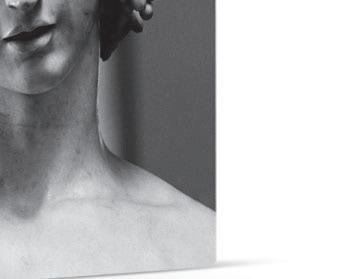

Kathleen W. Christian

A new interpretation of Michelangelo’s Bacchus and its Roman context

n Michelangelo’s first day in Rome, in June 1496, Cardinal Raffaele Riario asked him if he could create ‘something beautiful’ in competition with the antique. The twentyone-year old sculptor responded to this unique challenge with the statue of Bacchus now in the Bargello museum. This statue, as well as the Sleeping Cupid which first brought Michelangelo to Riario’s attention, have long been shrouded in mystery, and the Bacchus as well as its patron have long suffered from critical censure.
Through a comprehensive analysis of overlooked and previously-unpublished sources, this study sheds new light on the Sleeping Cupid, the Bacchus, and a fascinating period in the history of Renaissance Rome when the careers of Riario, Galli, and Michelangelo were closely intertwined. It considers the rise of the Riario dynasty starting with the election of Pope Sixtus IV in 1471, Riario’s partnership with Jacopo Galli in the reconstruction of the palace now known as the
Palazzo della Cancelleria, the attempted sale of Michelangelo’s Sleeping Cupid in Rome as an antiquity, Riario’s patronage of the Bacchus, and the Bacchus’s display in the house of the Galli up until its sale to the Medici in 1572. Taking a broad, interdisciplinary perspective, it offers a fundamental reassessment of Cardinal Riario’s career as a patron, of Jacopo Galli’s role as an intermediary for both Riario and Michelangelo, and of Michelangelo’s collaboration with Riario and Galli.
Kathleen W. Christian is Professor of Early Modern Art at the Institut für Kunst- und Bildgeschichte of the Humboldt-Universität in Berlin. She is also Director of the Census of Antique Works of Art and Architecture Known in the Renaissance. She has published widely on the reception of antiquity in the Early Modern period and together with Cammy Brothers co-directs the Harvey Miller book series All’antica.
approx. 420 p., 100 b/w ills, 125 col. ills, 220 x 280 mm, ISBN 978-1-915487-11-7
Hardback: € 150 / $ 188.00
New Series: All’antica, vol. 2
FORTHCOMING
ALSO IN OPEN ACCESS




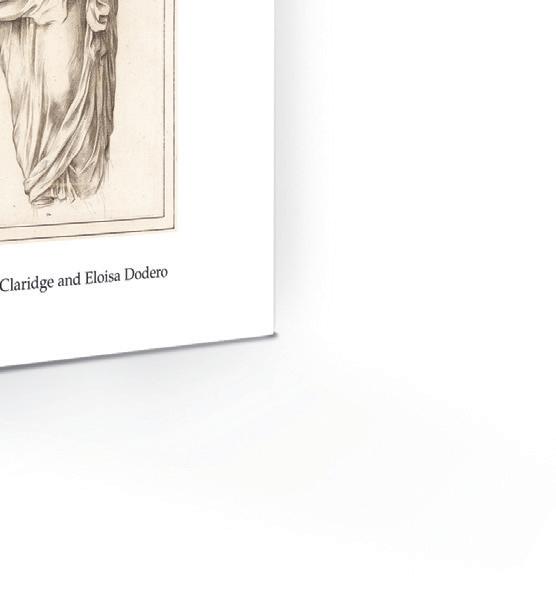
his volume comprises 207 drawings, about half of which are in the Royal Library at Windsor Castle and the rest in the Department of Greece and Rome in the British Museum and numerous public or private collections in the UK and abroad. They depict a wide variety of ancient statues of gods and humans, standing, seated or supine, large and small, whole and fragmentary, mainly of marble but also of bronze, as well as statuettes in marble and alabaster, figurines in bronze and terracotta, both Roman and Etruscan, military trophy groups and phallic sculptures. Also represented are herms, a sizeable series of portrait busts and heads, miniature busts in semi-precious stones and figurative appliqués. Some are wellknown pieces, from the Barberini, Giustiniani, Medici and Pamphilj collections in Rome, but many are unusual and otherwise unrecorded.
The drawings were largely commissioned in the 1630s and 1640s from artists such as Pietro Testa and Vincenzo Leonardi, with smaller groups thereafter, the last in the mid-1680s.The assemblage was probably initially intended by Cassiano for publication as a series of prints for the benefit of
antiquarian scholars and artists, complementing the larger quantity of drawings of bas-reliefs which Cassiano had begun to assemble from the early 1620s onwards (published in Part A.III) and constituting the core of the Paper Museum in Cassiano’s narrower definition of it in 1654 as ‘everything good in marbles and bronze which can provide some information about antiquity’.
Amanda Claridge was Emeritus Professor of Roman archaeology at Royal Holloway, University of London, specialising in Roman art, topography and architecture, and with a particular interest in antiquarian studies of the early modern period. She also taught at the universities of Princeton and Oxford and was Assistant Director of the British School at Rome from 1980 to 1994.
Eloisa Dodero is archaeological curator at the Capitoline Museums in Rome. She was employed by the Royal Collection as research assistant to the Dal Pozzo Catalogue Project and has published extensively on the history of antiquarian collections and the reception of the antique in the early modern period.


Christoph Frommel, Georg Schelbert (eds)
This volume completes the catalogue of the Sangallo workshop drawings collection housed at the Uffizi Gallery in Florence.
These volumes complete the catalogue of the Sangallo workshop drawings collection housed at the Uffizi Gallery in Florence. Antonio da Sangallo the Younger (1484-1546) and his workshop were involved in St. Peter’s Basilica, the Palazzo Farnese, and Villa Madama in Rome; vast fortification projects in Castro, Florence, Perugia, and Rome; and dozens of other secular and religious buildings throughout Italy. After Bramante, it was the Sangallo workshop that most strongly influenced sixteenth- and seventeenth-century Italian architecture. Andrea Palladio, Giacomo della Porta, Carlo Maderno, Francesco Borromini and Gianlorenzo Bernini are among those indebted to him. In all of the projects touched by the Sangallo workshop one senses an intense laboratory in action. This volume focuses on the study of ancient
architecture, as well as the drawings for palaces and the Vatican. An international team of scholars has written entries for the drawings. The volume also includes essays by Christoph L. Frommel and Pier Nicola Pagliara, as well as a translation of the Codex Stosch-Rothstein by Ian Campbell.

Christoph Luitpold Frommel has held academic posts in Bonn, Princeton, Berkeley and Rome. He was director of the Bibliotheca Herziana in Rome from 1980 to 2001.
Georg Schelbert is Head of the Media Library at the Humboldt-Universität zu Berlin.
2 vols, 584 p., 528 b/w ills, 216 x 280 mm, 2023, ISBN 978-1-912554-39-3
Hardback: € 250 / $ 313.00
Series: Studies in Medieval and Early Renaissance Art History










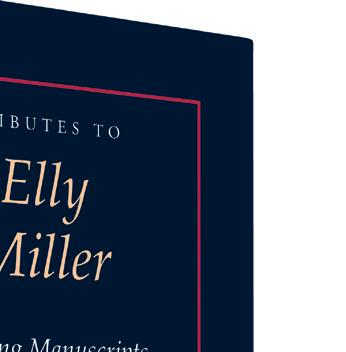



Stella Panayotova, Lucy Sandler, Tamar Wang (eds)

The nineteen essays by distinguished scholars in the field are wide-ranging methodologically, chronologically and geographically. It is a splendid tribute to Elly Miller’s inspiring role in opening manuscripts up to fresh study.
pening Manuscripts, inspired by Elly Miller’s passion for manuscripts and her commitment to their study, shines a light on the many ways in which medieval manuscripts can be understood. From the physical unfolding of the parchment to discussions of iconography, dating and influences, over time and across countries, each of the volume’s nineteen richly illustrated essays by distinguished scholars in the field asks us to explore a different aspect of the illuminated manuscript. It is a splendid tribute to Elly Miller (1928-2020), the driving force behind Harvey Miller Publishers, who championed medieval art for over half a century. From 1970 to the end of her life, her role as publisher, not only commissioning but also
personally editing and designing, was fundamental to the development of the scholarly study and wider appreciation of handwritten and illustrated books of the Middle Ages and the Renaissance.
Stella Panayotova is Royal Librarian and Assistant Keeper of The Royal Archives.
Lucy Freeman Sandler, Professor of Art History Emerita at New York University, is a specialist in Gothic illuminated manuscripts.
Tamar Miller Wang is an independent publisher and editor.
approx. 700 p., 185 col. ills, 220 x 280 mm, ISBN 978-1-915487-37-7
Hardback: approx. € 150 / $ 188.00
Series: Tributes, vol. 15 FORTHCOMING
 Saint George and the Dragon, Bernat Martorell Art Institute of Chicago
Saint George and the Dragon, Bernat Martorell Art Institute of Chicago


Zuzanna Sarnecka
184 p., 144 col. ills, 220 x 280 mm, 2022, ISBN 978-1-912554-78-2, Hardback: € 75 / $94.00
Series: Studies in Medieval and Early Renaissance Art History
AVAILABLE IN OPEN ACCESS


iv + 202
and
Erin Benay
120 col. ills, 220 x 280 mm, 2022, ISBN 978-1-912554-77-5
Hardback: € 100 / $125.00
Series: Studies in Medieval and Early Renaissance Art History
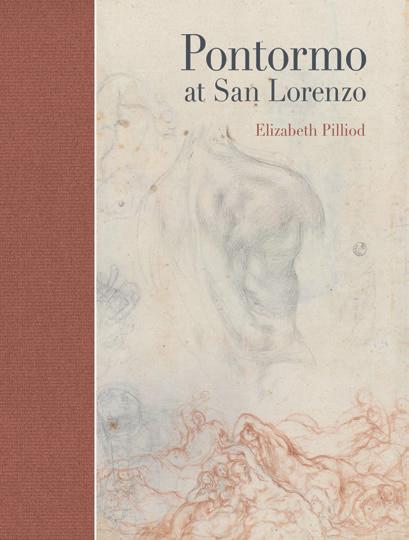

The Making and Meaning of a Lost Renaissance Masterpiece
Elizabeth Pilliod
384 p., 58 b/w ills, 90 col. ills, 225 x 300 mm, 2022, ISBN 978-1-909400-94-8
Hardback: € 125 / $156.00
Series: Studies in Medieval and Early Renaissance Art History


Hardback: € 100 / $125.00
Marjan Debaene (ed.)
Series: Studies in Medieval and Early Renaissance Art History


Hardback: € 100 / $125.00
The Crusades, Chertsey
Abbey, and the Reconstruction of a Medieval Masterpiece
Amanda Luyster (ed.)
Series: Studies in Medieval and Early Renaissance Art History









Hardback: € 275 / $344.00
An Addition to the Pantheon of Venetian Sculptors
Anne Markham Schulz
Series: Studies in Medieval and Early Renaissance Art History


Marjorie Trusted
288 p., 3 b/w ills, 150 col. ills, 225 x 300 mm, 2022, ISBN 978-1-909400-95-5
Hardback: € 50 / $63.00
Published outside a Series


Katherine M. Boivin, Gregory C. Bryda (eds)
416 p., 33 b/w ills, 222 col. ills, 225 x 300 mm, 2022, ISBN 978-1-912554-45-4
Hardback: € 180 / $225.00
Series: VISTAS, vol. 4









Manuscripts Illuminated in France
Frankish Manuscripts
The Seventh to the Tenth Century Lawrence Nees
2 vols, 708 p., 29 b/w ills, 302 col. ills, 230 x 330 mm, 2022, ISBN 978-1-872501-25-3
Hardback: € 295 / $369.00
Series: A Survey of Manuscripts Illuminated in France, vol. 2


Hardback: € 125 / $156.00
Patronage, Iconography, History, and Conservation
M.A. Michael (ed.)
Series: Studies in English Medieval Embroidery, vol. 2














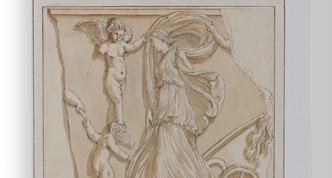









Sarcophagi and Other Reliefs
Amanda Claridge, Eloisa Dodero
4 vols, 1832 p., 190 b/w ills, 1170 col. ills, 220 x 285 mm, 2022, ISBN 978-1-912554-56-0
Hardback: € 235 / $294.00
Series: The Paper Museum of Cassiano dal Pozzo, vol. 3


Sarah Cohen
296 p., 165 col. ills, 225 x 300 mm, 2022, ISBN 978-1-912554-32-4
Hardback: € 150 / $188.00
Series: Studies in Baroque Art, vol. 15


Torquato Tasso’s Jerusalem Delivered from the Carracci to Tiepolo
Giovanni Careri
284 p., 8 b/w ills, 55 col. ills, 220 x 280 mm, 2022, ISBN 978-1-912554-10-2
Hardback: € 125 / $156.00
Series: Studies in Baroque Art, vol. 14


Catalysts of Innovation
Marlise Rijks
xviii + 278 p., 87 col. ills, 220 x 280 mm, 2022, ISBN 978-1-912554-05-8
Hardback: € 140 / $175.00
Series: Studies in Baroque Art, vol. 11









Corpus Rubenianum
Ludwig Burchard XXII.2
Nora De Poorter, Frans Baudouin
Hardback: € 275 / $344.00
Series: Corpus Rubenianum Ludwig Burchard, vol. 22.2


Corpus Rubenianum
Ludwig Burchard XX.I
Michael W. Kwakkelstein
220 p., 94 b/w ills, 62 col. ills, 175 x 260 mm, 2022, ISBN 978-0-905203-80-5
Hardback: € 140 / $175.00
Series: Corpus Rubenianum Ludwig Burchard, vol. 20.1
Corpus Rubenianum










Ludwig Burchard XI. 2
Hercules to Olympus
Elizabeth McGrath, Bert Schepers, Nils Büttner, Gerlinde Gruber, Fiona Healy, Eveliina Juntunen, Gregory Martin, Jeremy Wood
Hardback: € 295 / $369.00
Series: Corpus Rubenianum Ludwig Burchard, vol. 11.2

English

from Chaucer to Henry VIII, vol. 10 Scottish Manuscripts & English Manuscripts in Scotland
Fascicle I: National Library of Scotland, Edinburgh
Marlene Hennessy
182 p., 50 col. ills, 210 x 270 mm, 2022, ISBN 978-1-915487-01-8
Paperback: € 75 / $94.00
Series: An Index of Images in English Manuscripts from Chaucer to Henry VIII, vol. 10


Meredith Martin (ed.)
168 p., 84 col. ills, 220 x 280 mm, 2022, ISBN 978-1-912554-81-2
Hardback: € 75 / $94.00
Published outside a Series


307 p., 177 col. ills, 300 x 240 mm, 2022, ISBN 978-1-912554-03-4
Hardback: € 125 / $156.00
Kim Butler Wingfield, Tracy Cosgriff (eds)
Series: Studies in Medieval and Early Renaissance Art History
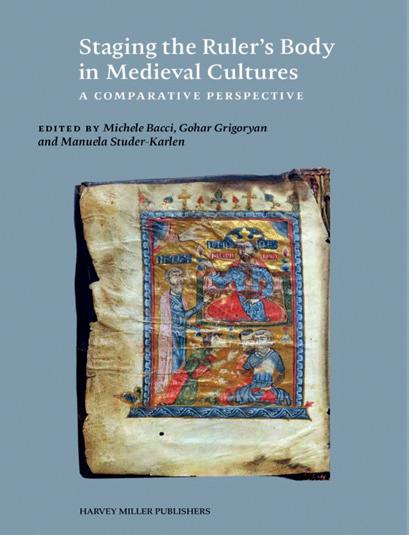

A Comparative Perspective
Michele Bacci, Gohar Grigoryan, Manuela Studer-Karlen (eds)
351 p., 1 b/w ill., 83 col. ills, 180 x 265 mm, 2023, ISBN 978-1-915487-08-7
Hardback: € 75 / $ 94.00
Series: Studies in Medieval and Early Renaissance Art History
AVAILABLE IN OPEN ACCESS


Carlo Cesare Malvasia’s Felsinapittrice,or LivesoftheBolognese Painters
Elizabeth Cropper, Lorenzo Pericolo
xxxiv + 410 p., 14 b/w ills, 163 col. ills, 220 x 280 mm, 2022, ISBN 978-1-912554-79-9
Hardback: € 200 / $250.00
Series: Felsina Pittrice: The Lives of the Bolognese Painters, vol. 2.1


Collaborative Spirit: Essays on Northern European Art, 1350–1650
Anna Koopstra, Christine Seidel, Joshua P. Waterman (eds)
346 p., 250 col. ills, 210 x 275 mm, 2022, ISBN 978-1-912554-75-1
Hardback: € 75 / $94.00
Series: Tributes, vol. 12


Collaborations in Netherlandish Art
Abigail D. Newman, Lieneke Nijkamp (eds)
242 p., 80 col. ills, 220 x 280 mm, 2021 ISBN 978-1-912554-73-7
Hardback: € 100 / $ 125.00
Published outside a series
How to order:
• Go to our webshop on www.brepols.net (only for individuals and available titles)
• Use this order form
q I wish to order a copy of
Title
Name:
Telephone:
Fax:
q Please keep me informed about new publications
Date:
Signature:
